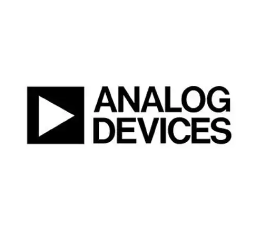**AD7302BNZ: A Comprehensive Guide to the Dual 8-Bit DAC from Analog Devices**
In the realm of digital-to-analog conversion, precision and versatility are paramount. The **AD7302BNZ from Analog Devices** stands out as a robust and highly integrated solution, specifically engineered to deliver reliable performance in a wide array of applications. This dual-channel, 8-bit digital-to-analog converter (DAC) combines compact design with advanced features, making it an excellent choice for modern electronic systems requiring accurate analog output generation.
**Architecture and Key Features**
The AD7302BNZ is built around a precise **R-2R ladder network** architecture, which ensures consistent and accurate conversion across both channels. Each DAC operates from a single power supply ranging from **2.7V to 5.5V**, making it suitable for both 3V and 5V systems. This flexibility is crucial for portable and battery-operated devices where power efficiency is critical.
A standout feature of this DAC is its **double-buffered digital input**. This design allows both channels to be updated simultaneously through a single write operation, which is essential for applications requiring synchronous output changes. The interface is serial, compatible with SPI, QSPI, and MICROWIRE protocols, ensuring easy integration with most modern microcontrollers and digital processors.
The device includes an on-chip **output buffer amplifier** that can drive the output voltage to rail-to-rail, maximizing the dynamic range available from the supply voltage. With a typical settling time of just several microseconds, the AD7302BNZ can quickly respond to digital input changes, supporting dynamic waveform generation.

**Applications**
Thanks to its dual-channel output and compact form factor, the AD7302BNZ is widely used in diverse fields. It is commonly employed in **process control and automation** systems for generating control voltages and setpoints. In consumer electronics, it can be found in digital gain and offset adjustment circuits. Additionally, it serves effectively in waveform generators, programmable voltage sources, and even in some automotive electronics modules where reliability under varying temperatures is required.
**Design Considerations**
When integrating the AD7302BNZ, attention should be paid to **power supply decoupling** and **PCB layout** to minimize noise and ensure signal integrity. Placing a bypass capacitor close to the power supply pin is highly recommended. The digital and analog grounds should be connected appropriately to avoid ground loops. Furthermore, the output buffer, while powerful, has limited current drive capability; thus, for higher current demands, an external amplifier might be necessary.
**Conclusion and Advantages**
The AD7302BNZ offers an effective combination of **performance, integration, and cost-efficiency**. Its dual DAC architecture saves board space and reduces component count, while its serial interface simplifies digital connectivity. With low power consumption and a wide operating voltage range, it is adaptable to numerous design environments.
**ICGOOFind**: The AD7302BNZ is a highly versatile dual 8-bit DAC that excels in providing precise analog outputs with minimal external components. Its combination of a flexible supply range, serial interface, and simultaneous update capability makes it a superior choice for designers seeking reliability and integration in data conversion systems.
**Keywords**: Digital-to-Analog Converter, Dual Channel, SPI Interface, Low Power Operation, R-2R Ladder
